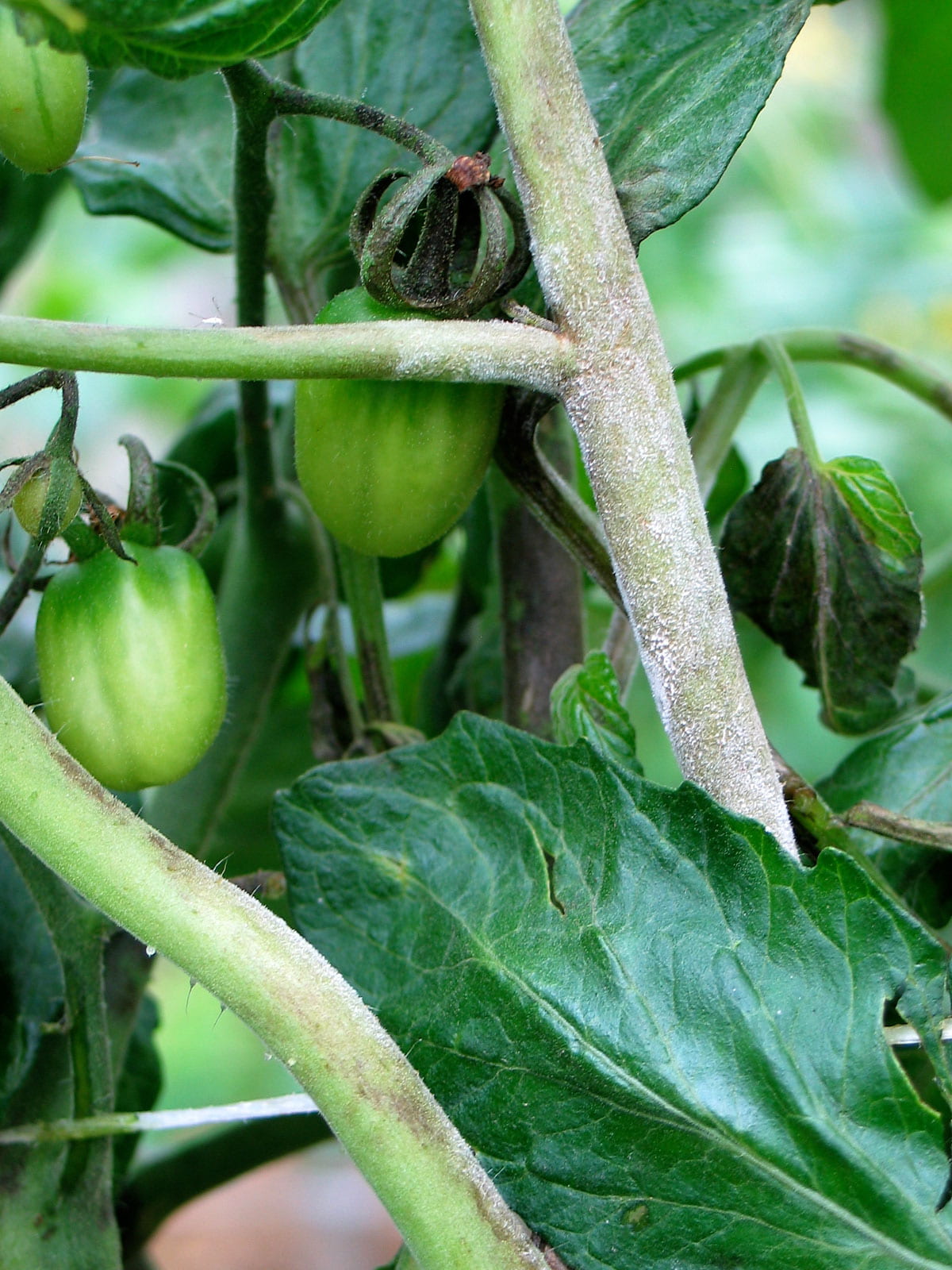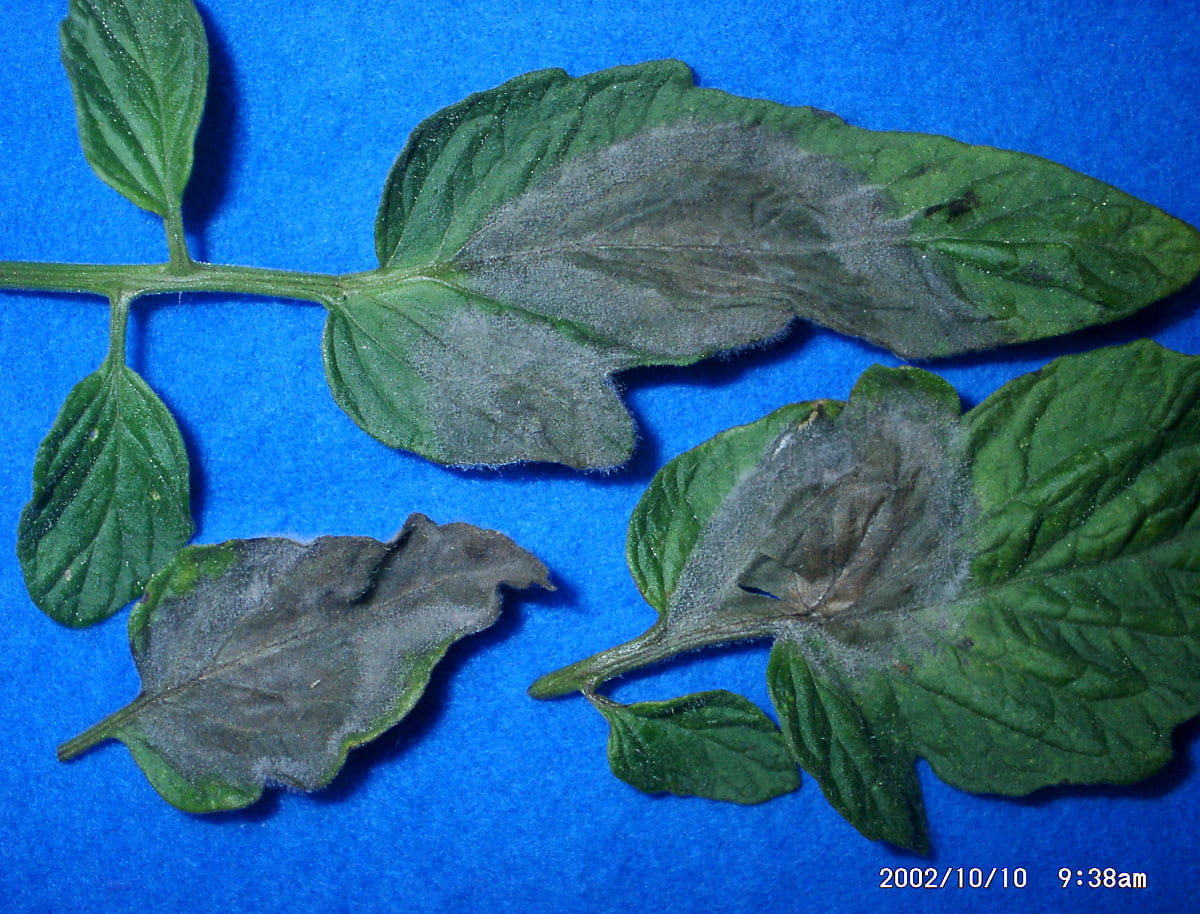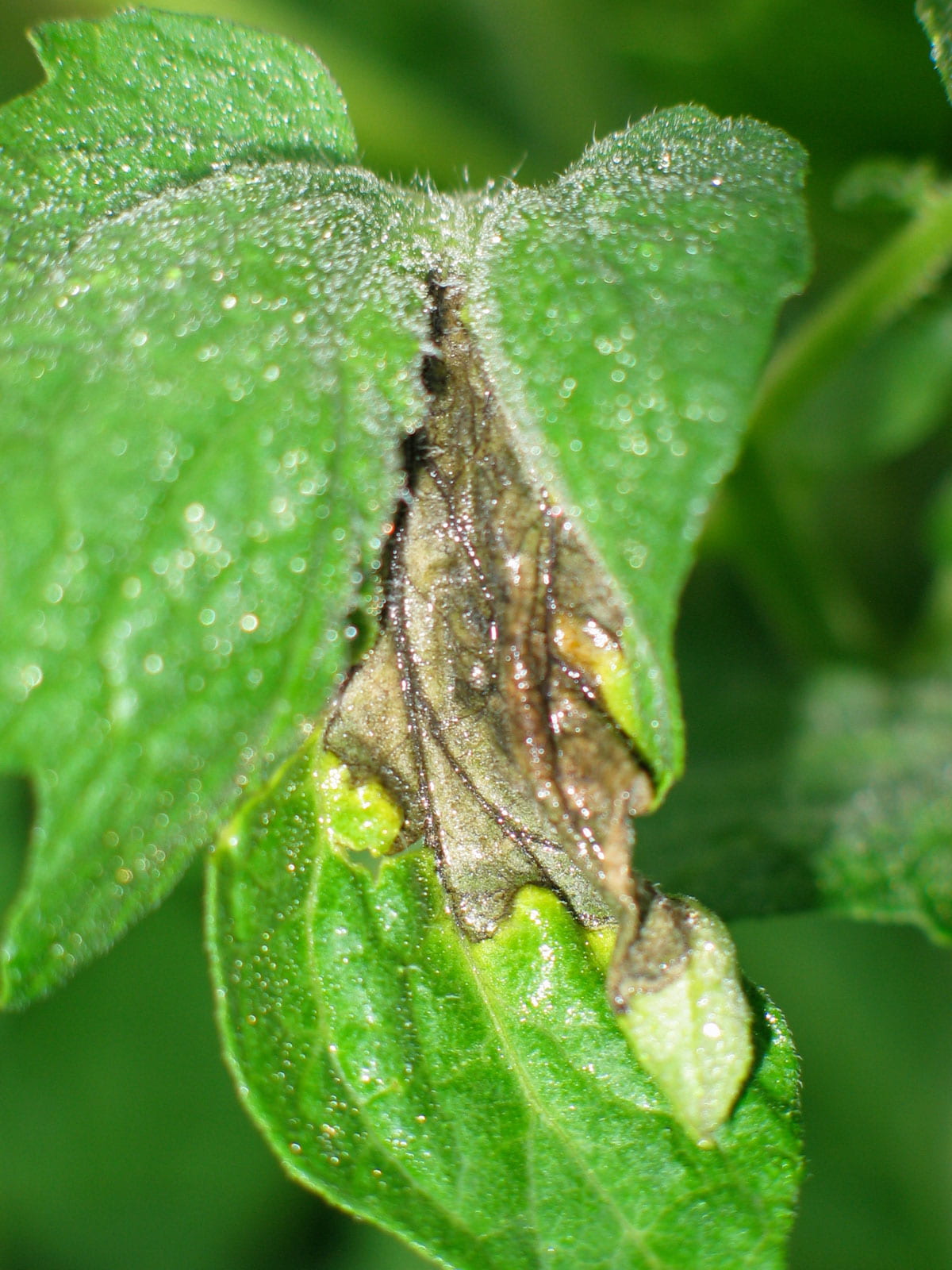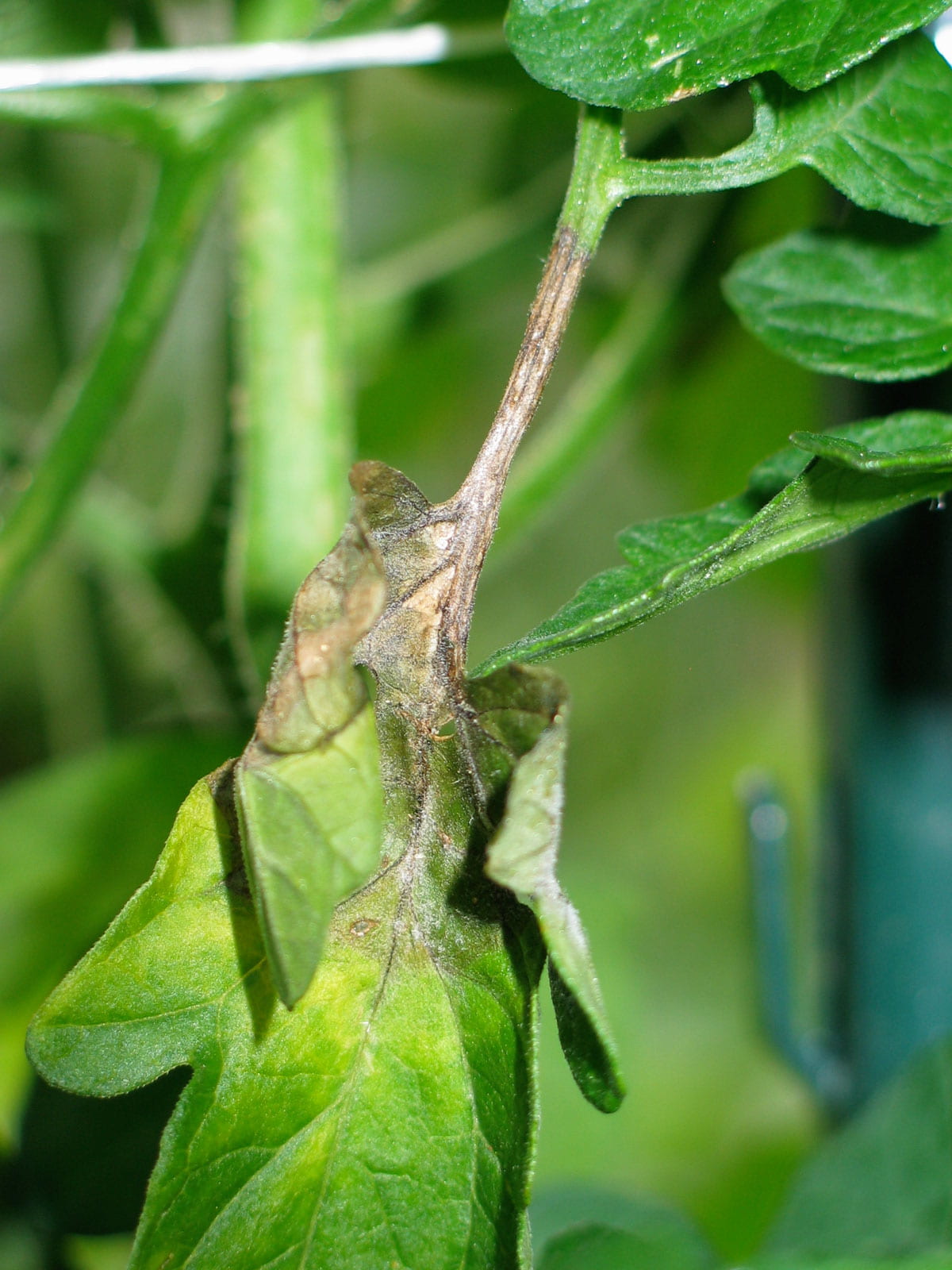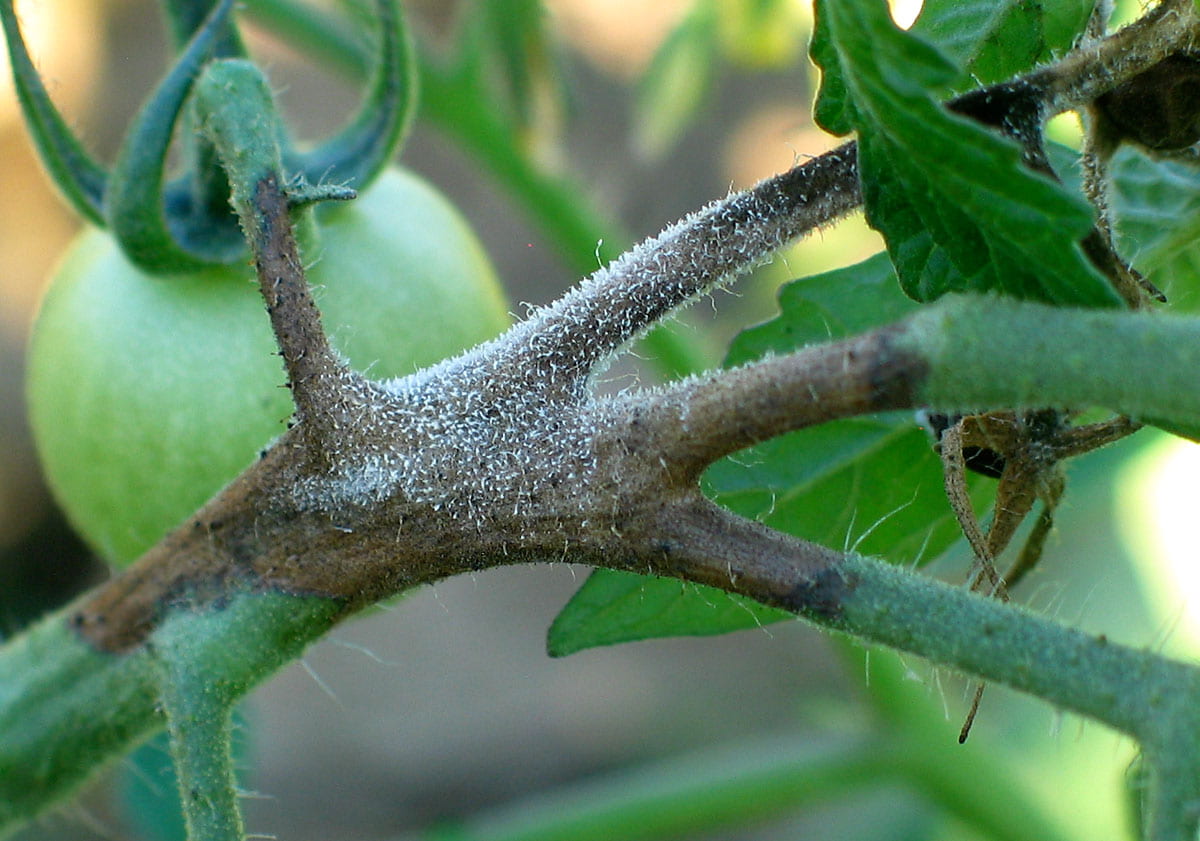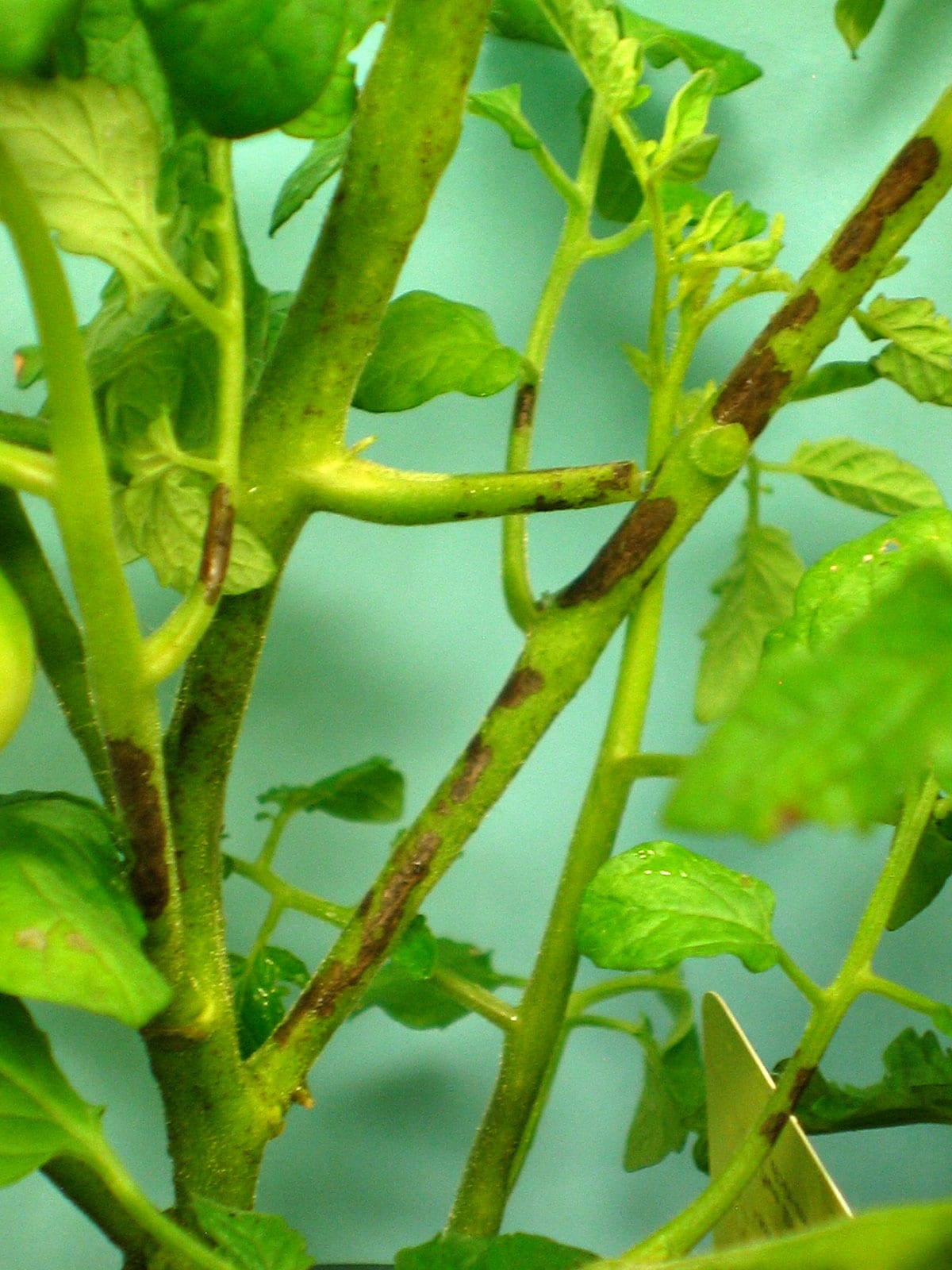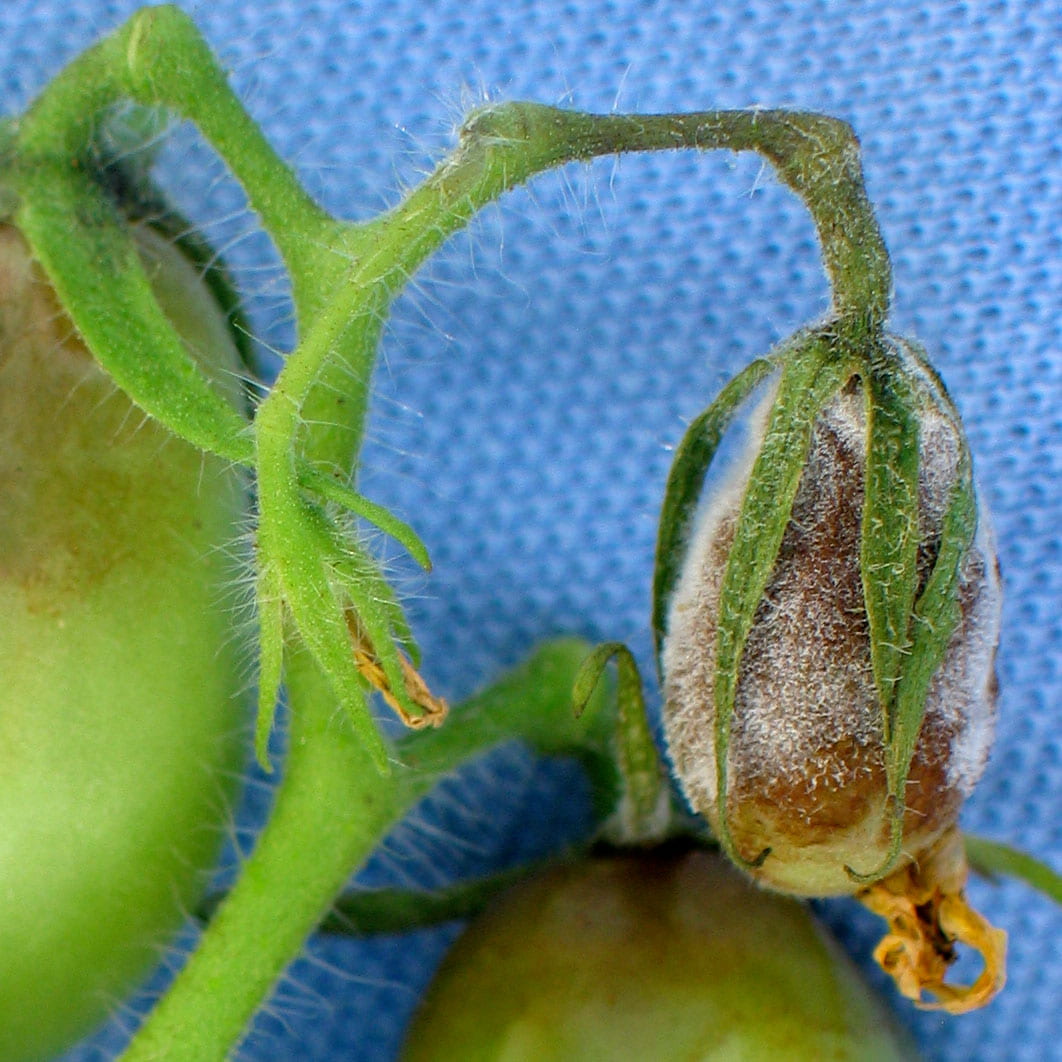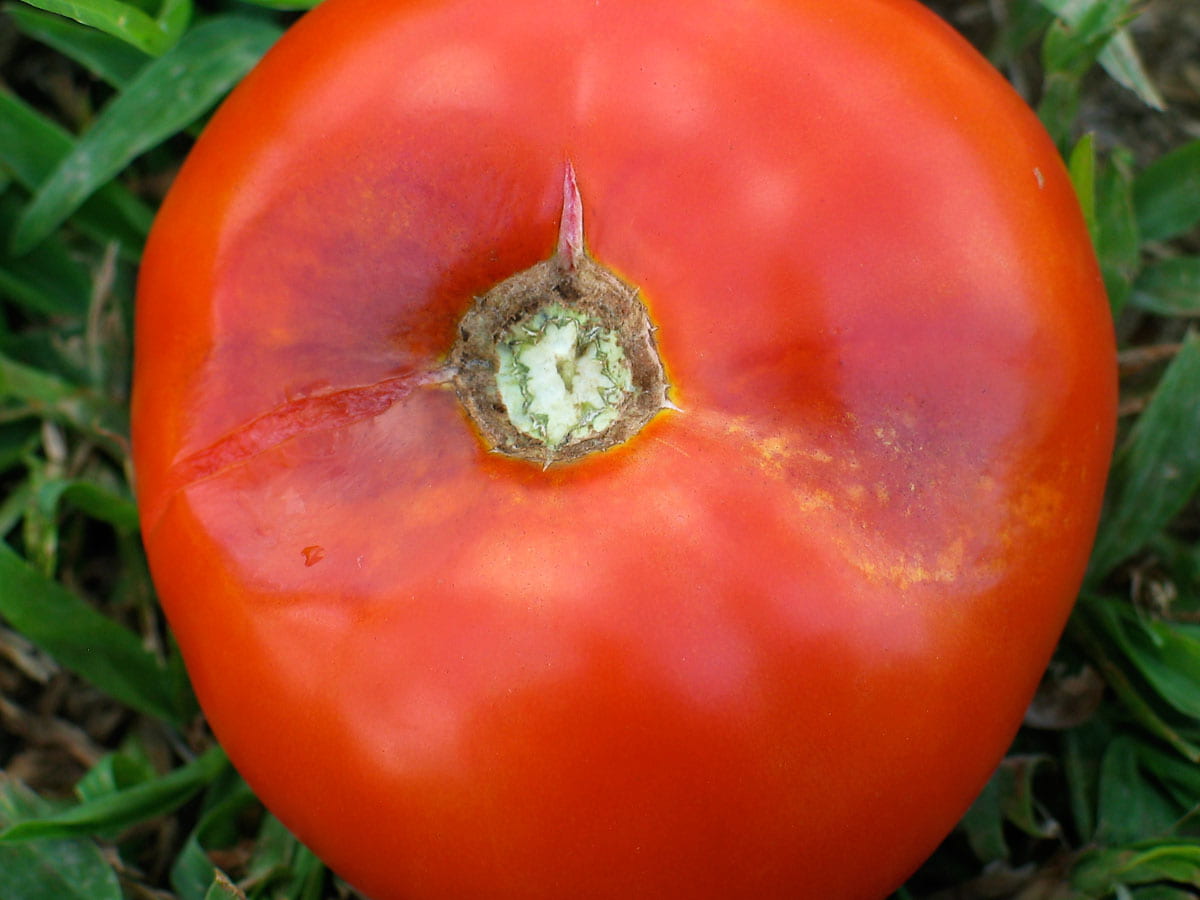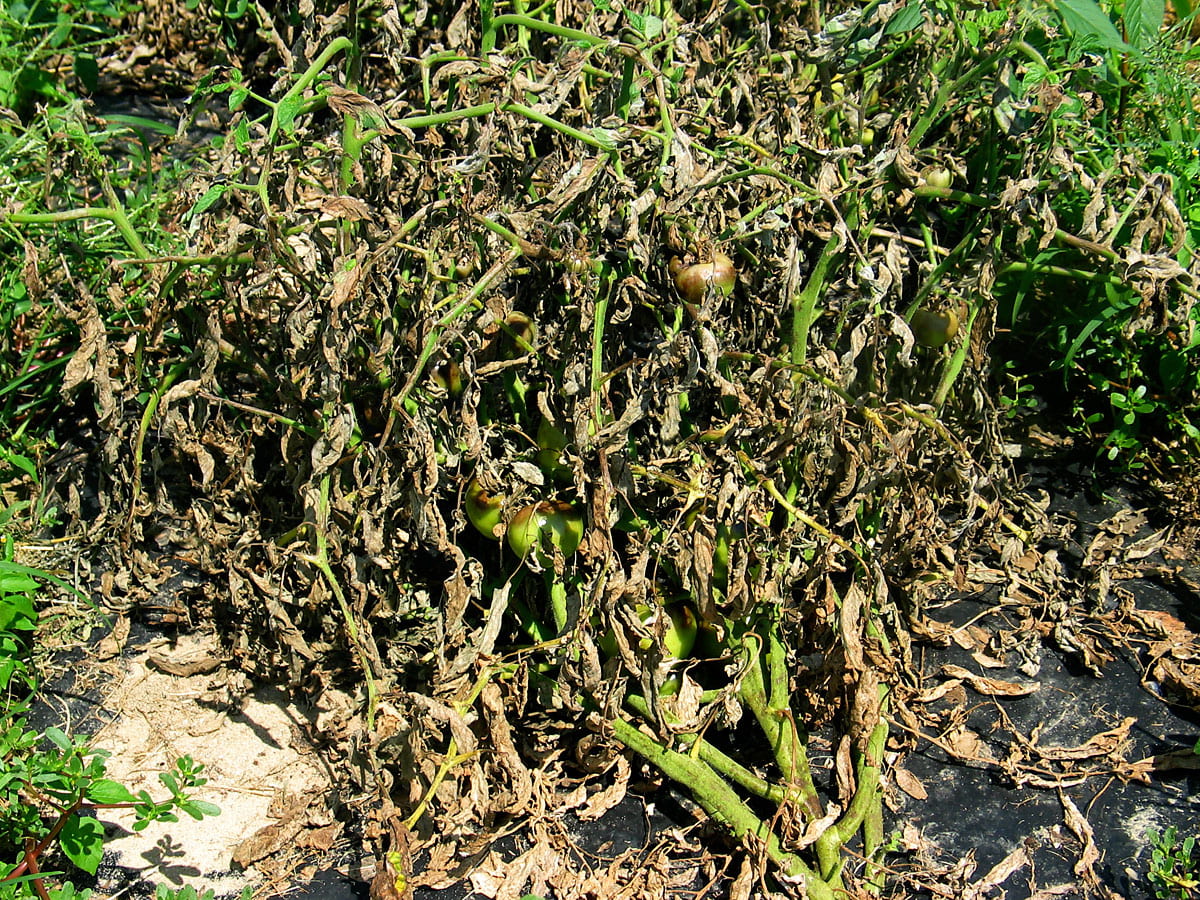Image below shows initial symptoms of late blight on tomato in a garden. There is an affected leaflet below the bottom trellis line. The primary symptoms are stem lesions between the second and top lines. See close-up images of those lesions in following images.
Next two images: These dark brown lesions on stems, with white fungal growth developing under moist conditions, are characteristic of late blight. The fungal growth on the stems and also on affected leaves consist of thousands of microscopic spores. The spores can be dispersed by wind to healthy plant tissue, infect the healthy tissue if it is wet for a few hours, and within a few days produce a new lesion.
The disease can be very explosive due to the quantity of spores produced and the quick disease cycle under cool, wet conditions. And it is destructive as diseased tissue is killed quickly. Established lesions cannot be controlled, even with the most effective systemic fungicides that can be used by farmers with a pesticide license.
Leaf lesions due to late blight
Leaf lesions due to late blight
Leaf lesions due to late blight
Fuzzy growth on the underside of leaf lesions (below) is produced by the pathogen under moist conditions and consists mostly of spores.
Lesions (below) with growth and spores of the pathogen that developed while it was in a plastic bag over night.
A single leaflet with a lesion is the first sign of late blight development in this garden.
Close up of the leaf above.
More close-ups of leaf lesions. Click each image for larger views
Below: First symptoms on Long Island in 2013. Found on 25 July after an extensive heat wave ended with heavy rainfall.
Below: Plants with numerous initial symptoms of late blight. These plants are too severely affected to be saved. (Photo courtesy Dr. Steve Johnson, University of Maine Cooperative Extension, retired.)
Early stem lesion (below).
Stem lesion with sporulation of the pathogen. (below).
The brown spots on this tomato stem (below) are probably not due to late blight.
Young plants can be infected before transplanting, showing stem lesions (below) …
… and leaf lesions.
Young plant with stem lesions. (below)
Green fruit affected by late blight (below).
Green fruit affected by late blight. Note fuzzy pathogen growth and spores, (below).
Symptoms of late blight on ripe fruit (below).
Below: Symptoms of late blight on ripe fruit (Photo courtesy Dr. Steve Johnson, University of Maine Cooperative Extension, retired.)
Plant killed by late blight (below).
Symptoms seen during heat wave
The leaflets below illustrate the only leaf symptoms seen in an affected planting during a record-breaking high temperature period on Long Island, NY, in July 2011. (Daily highs were 86F to 101F and precipitation was 0.01 inch during previous 7 days in the specific location. View weather details.) Lacking a light green, wilted border that is typical with late blight, these symptoms more closely resemble those resulting from drought stress. The plants had not been watered. Some fruit had symptoms of late blight. (See images below of fruit exterior and with skin peeled away.) No symptoms were seen on stems. Both leaf and fruit tissue tested positive for Phytophthora with an Agdia test kit. A few spores of the late blight pathogen (sporangia) were found next to a major vein during careful inspection of lower leaf surfaces using a dissecting microscope, then examined with a compound microscope. Pathogen growth likely was slowed by unfavorable high temperature, resulting in these uncharacteristic symptoms. The planting had not been sprayed with any fungicide. US23 was the pathogen strain responsible for the 2011 outbreak on Long Island.
Click on thumbnails for larger view.
A late season infection
These images (below and the following thumbnails) were taken on 31 August 2009 when late blight was first observed on this farm. These plants only had symptoms of Septoria leaf spot on a few lower leaves 3 days earlier. Last fungicide application was copper 10 days earlier. These plants are too severely affected to be salvageable. Fruit were just starting to ripen in this late planting thus this is a total loss. With the exception of a lengthy rainstorm that started less than 3 days before these symptoms were seen (which is too short a time period for symptoms to develop after infection), weather conditions, being hot and dry during August in this area, did not seem to be favorable for late blight. There was only 2.01 inches of rain, with 1.08 inches falling over 28-30 August. Prior to this event, rainfall was 0.45, 0.07, 0.04, 0.09, 0.18, and 0.01 inches on 1, 2, 10, 13, 22, and 27 August. Average monthly high temperature was 83 F and low was 68 F. This outbreak illustrates that late blight does not occur only when it is rainy and cool. High relative humidity is recognized as providing a sufficient amount of moisture for the late blight pathogen to be able to infect.
Infected fruit
Below: First leaves with late blight found in a garden (10 September 2013). No spots had a characteristic edge with wilty, yellowish-green tissue (fifth image on this page). Pathogen’s spores were observed on the underside of these leaves confirming the diagnosis.
Below: Unusual symptoms with a bull’s eye (ring spot) appearance were observed on 5 October in the same garden where the leaves above were collected. The small spots on these leaves are Septoria leaf spot.
Some weeds are susceptible to late blight
There are several types of nightshade, which are all in the same botanical family (Solanaceae) as tomato and potato, thus it is not surprising that these weeds can also be affected by some of the same diseases. The large, brown leaf spots on the bittersweet nightshade in the images below are symptoms of late blight. Limited sporulation of the pathogen was observed with a microscope on the underside of the spots. This weed was found next to a garden where tomatoes had late blight in 2009. Some leaves are notched, which is characteristic for bittersweet nightshade, as is the vining growth habit. It is a common weed in hedges and landscapes, but not in agricultural areas. It is difficult to eradicate because vines break easily thus whole plants cannot easily be pulled up.
Late blight on bittersweet nightshade.
Upper surface of bittersweet nightshade leaf with late blight.
Lower surface of bittersweet nightshade leaf with late blight.
Flowers and fruit of bittersweet nightshade (below) resemble those of tomato. These are characteristics of the Solanaceous Family.
Close up of flowers and fruit of bittersweet nightshade (below).





